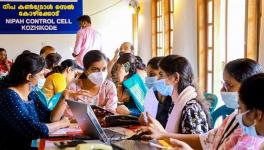Addressing the Leading Cause Of Death in Children: Pneumonia

Image Courtesy: The Financial Express
12th of November was World Pneumonia Day. Pneumonia is an inflammatory condition affecting the alveoli in lungs. This condition is usually caused by infection with bacteria and viruses and can affect any age group.
However, along with diarrhoea, pneumonia is the leading cause of mortality for children under the age of five. Around 2,500 children die due to pneumonia every day across the world. Pneumonia accounts for 15 % of all child deaths under the age of five in the world and has killed 9,20,000 children in 2015.
In order to effectively address the morbidity and mortality due to pneumonia, countries, under the leadership of WHO and UNICEF, adopted the Global Action Plan for the Prevention and Control of Pneumonia and Diarrhoea (GAPPD) in 2015. This action plan aims to end preventable child deaths from pneumonia and diarrhoea by 2025
The action plan proposes the following interventions to deal with pneumonia and diarrhoea: Promotion of exclusive breastfeeding. • Use of vaccines against Streptococcus pneumoniae (Spn), Haemophilus influenzae type b (Hib) and against rotavirus to prevent Diarrhoea- which is the major cause of malnutrition • Use of vaccines against measles and pertussis in national immunization programmes • Use of simple, standardized guidelines for the identification and treatment of pneumonia and diarrhoea in the community and first-level health facilities • ORS and Use of zinc supplements with ORS• Behaviour change and sustaining long-term preventive practices. • WASH interventions: safe drinking-water and sanitation • Reduction of household air pollution with improved stoves.
Better strategies are needed
A matter of concern is the search for quick-fixes and countries, including India, are pursuing lopsided strategies. A major drive is being seen towards procurement, introduction and scaling up of vaccines as the fundamental intervention. PCV- Pneumococcal conjugate vaccine and Hib- Haemophilus influenzae type B vaccine is effective in protecting against pneumonia caused by the bacteria. However, data regarding their effectiveness in significantly reducing pneumonia morbidity and mortality in children is yet to be available. It should be remembered that most cases of pneumonia are caused by viruses and vaccination with PCV or HiB does not protect against viral infections. On the other hand, we witness widespread neglect of health systems, which are key to preventing and controlling control of pneumonia. Public spending on healthcare is one of the lowest in the world in India (in per capita and percent GDP terms) and the grossly underfunded public system also faces an acute shortage of doctors and other health workers.
The fundamental problems associated with pneumonia and many other infectious conditions are the prevalence of malnutrition, poor living conditions, indoor pollution and bad sanitation.
Governments must understand that pneumonia control and prevention requires implementation of a wide range of social and medical interventions, including those mentioned in the UNICEF-WHO Global Action.
Get the latest reports & analysis with people's perspective on Protests, movements & deep analytical videos, discussions of the current affairs in your Telegram app. Subscribe to NewsClick's Telegram channel & get Real-Time updates on stories, as they get published on our website.
























